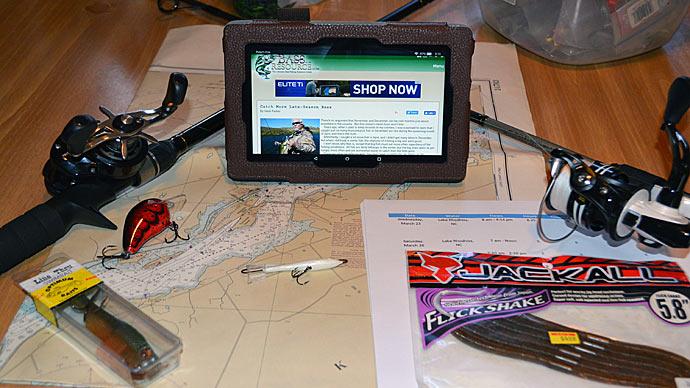Alright this is January, and the tournament year is just around the corner. The south Texas circuits will start this month as well as some held on hot-water lakes in warmer areas.
The boat shows have all been catching everyone's attention. It's a great way to see what's new and different in the world of fishing. With the slow economic times, boat and tackle manufacturers and dealers have been having some great promotions that will really benefit fishermen. If you're in the market for a new boat, now will be the time to take advantage of these promotional offers.
Going to the shows will get you excited, but enthusiasm alone won't put any fish in your boat so let's get down to the business at hand, your tournaments. You need to channel that excitement into preparation for the coming year.
There is one technique that most Honey Hole tournament anglers, and in fact most tournament anglers in general, will never use. This technique doesn't even require your boat or tackle - just a couple of hours and a good map of the lake where your next event will be held.
This technique is called "aerial scouting" and it's the ultimate method for eliminating non-productive water and possibly finding productive water. It will take some pre-planning ahead of time. You can't just show up at the airport and hop on a plane. You wouldn't want to anyway. Not all pilots are equal.
Here are a few guidelines that will help you with your preflight checklist.
The first item is the pilot. I check with small, local airports for pilot training schools. I've flown takes for over 20 years and the best bet is to hire an instructor. These people naturally have the most experience and flight time. Unless you know a good pilot, try an instructor. I've flown several dozen times in Michigan, Florida, and Texas and have found instructors to be the best choice.
The most limiting factor facing you is time. Aerial scouting will save you a lot of time. From the air you can see what's around the next bend in the creek, you don't have to wonder about it. You get the "big picture" of the lake within about an hour, when by water it might take you three days to cover all you want to.
You don't have to fly the whole lake. Just like if you were in your boat, eliminate water by season. In the spring don't waste your time on the main lake. In summer forget the shallow flats. You'll be surprised at what you can see from the air. Grass beds are very easy to see. In the spring on a clear day, spawning beds are readily visible from the air - so are muddy areas. I can hear what you're thinking right now, "This isn't a BASS tournament. This is a Honey Hole "Top 40" team event. I'm not fishing for $100,000.00. I'm fishing one day for $2,000.00."
That's the misconception of aerial scouting. It's cheaper than you might think. Most pilot schools charge from $75 to $100 an hour. Most lakes can be flown in less than two hours. The planes are four-seaters - so find two other anglers and split the cost.
When you add it up, the price will be less than one tank of boat gas, certainly less than the amount of time you'd have to spend seeing it all in a boat, and you can see the whole lake if you wish. Aerial scouting is a more productive technique for Honey Hole anglers than professional fishermen. Let's face it. I usually can spend 10 to 20 days on a body of water pre-fishing, whereas you might be able to have a couple of weekends.
Aerial scouting will never replace time spent on the lake, but it can make the time you do spend more productive. Add it to your tournament arsenal and bring more fish to the scales.
See you at the boat shows and on the water. Good luck and God Bless.
Bill Wilcox is sponsored by Ranger Boats, Yamaha Outboards, MCMC, BG Products, Pro Rule, Johnson Fiberglass, Brown's Automotive, Continental Batteries, Kistler Rods, Swamp Hog Lures, Strike King Lures, and Fun-n-Sun Sports Center.


